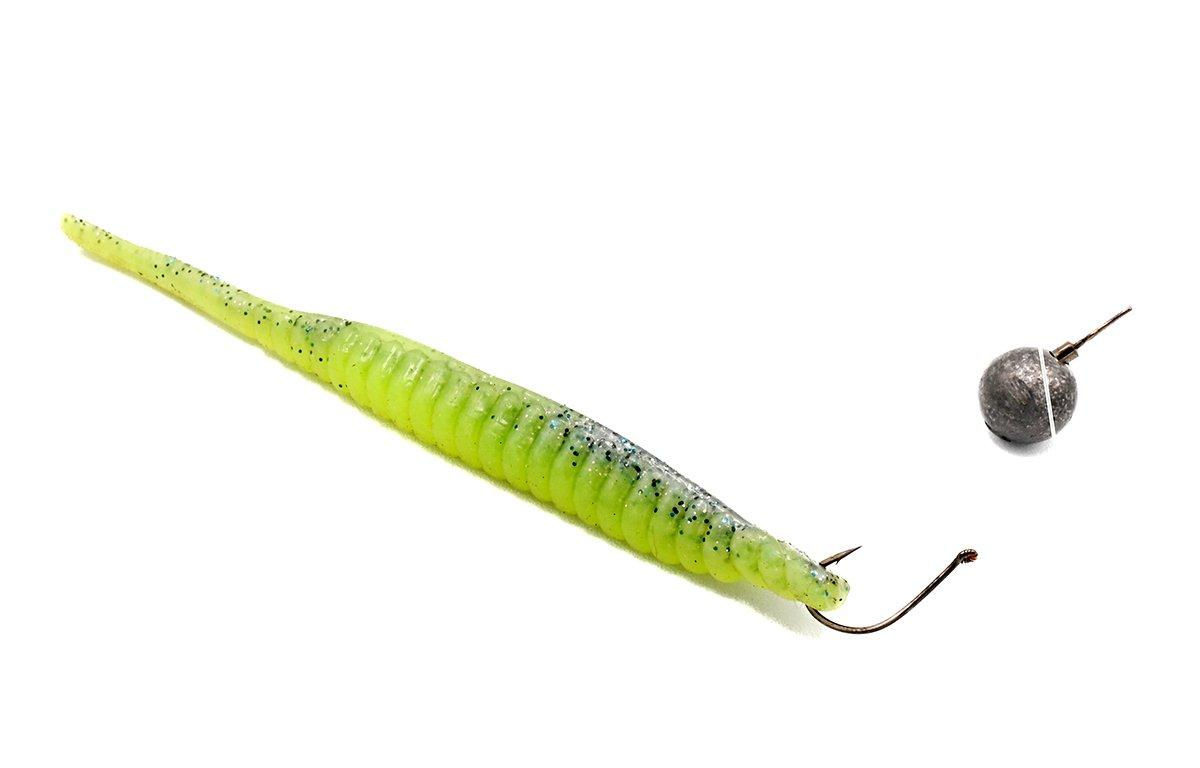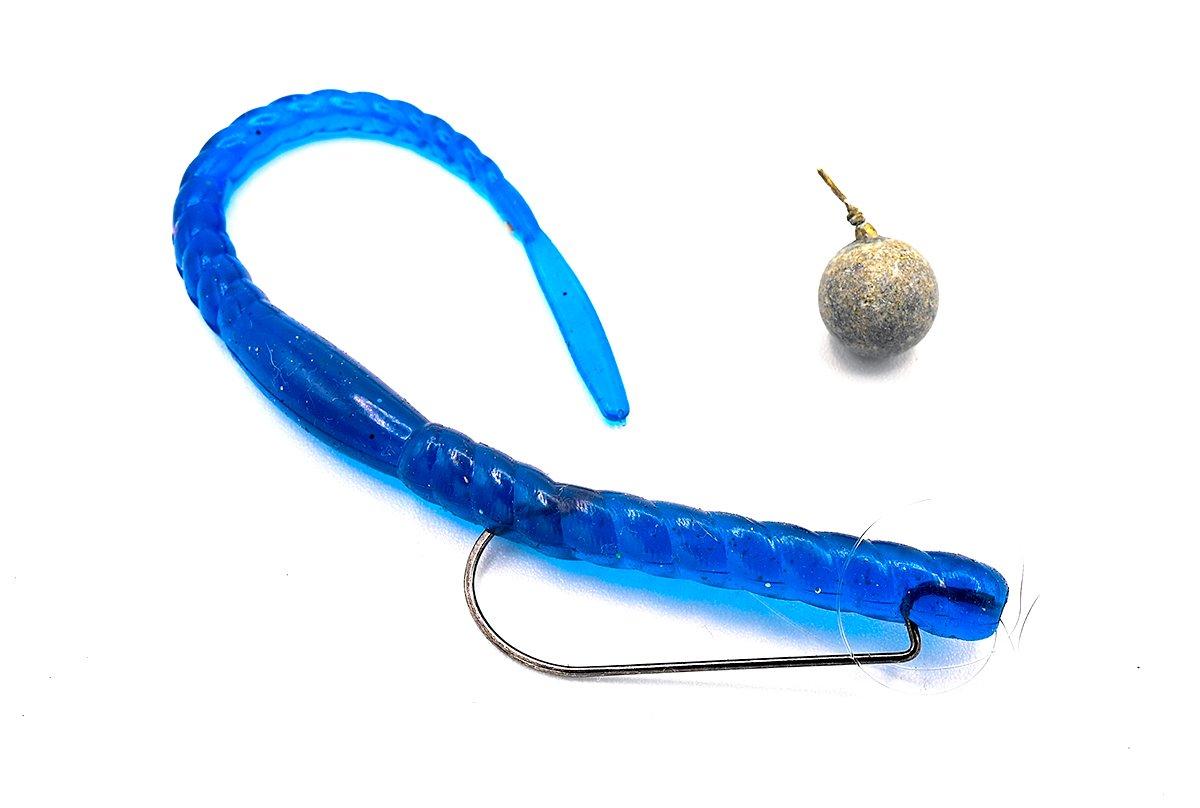When the boats are running and the sun is hot, you can still count on getting bites with this efficient finesse rig
By now, most bass anglers are familiar with the drop-shot rig. Two decades have passed since the tactic first hit the fishing scene. The drop-shot's origins are in Japan, where finesse-fishing gurus perfected the technique and later shared it with West Coast anglers facing tough fishing conditions in the clear waters of California. The drop-shot quickly answered the prayers of bass anglers struggling to get a bite.
Then the drop-shot moved east, proving its effectiveness through the country's midsection and into the Great Lakes. It was here that the drop-shot, which allows bottom contact even in the roughest waters, gained steam among smallmouth bass anglers. Personally, I fished the drop-shot rig to over a quarter-million dollars in tournament earnings during my tenure as a competitive angler on Lake Erie in the early 2000s. Then, nothing came close to the rig's effectiveness for big-water bronzebacks.
Drop-shot fishing (aka Drop-shotting) has evolved to include nearly all regions of North America. The rig can be productive throughout the year, but it's especially effective in the summer. Warm waters coupled with intense fishing pressure, boat traffic, and lethargic bass help the drop-shot's strengths shine.
(Don't Miss: The 3 Best Lures for Catching a 10-Pound Bass)
The Science Behind the Rig
It's important to not only understand the basics of the drop-shot, but also why it's so effective. Basically, a drop-shot is any fishing rig tied with the hook on the line above the sinker. That's where the name comes in — the shot, or sinker, is dropped below the hook.
Of course, rigs like that, in some form or another, have been around forever. Chicken-rigs. Cheater and catfish rigs. Deep-water contraptions for the open ocean. Yes, all are technically drop-shots. And that's where our lesson comes in. The drop-shot rig, in any form, takes on a totally unique look, compared to other ways of fishing. Because the weight is below the bait, this becomes a slack-line technique once the rig is settled on the bottom.
That's why drop-shot fishing is so effective. Every bass angler is familiar with the potent draw of weightless plastics like Senkos and wacky rigs for finicky fish. A drop-shot rig can give you that look and fish-catching allure down deep, without having to wait an eternity for your lure to sink. That's the key.
Tying Up
Creating a drop-shot rig is easy. A small finesse worm is usually used for finicky bass, but always choose long, slender plastics that are free of legs and pinchers that can twist your line. Drop-shotting favorites are traditionally modest, straight plastic worms and minnows; the softer, the better. Some companies are now using super plastics, which are incredibly buoyant and allow the lure to float up, rather than settle, on a drop-shot rig, and can help trigger more bites. Z-Man Fishing Products' ElaZtech lures are a good example.
(Don't Miss: Why You Suck at Throwing a Baitcaster)
You need to match those small baits with an equally small hook. In snag-free areas, simply nose-hooking the worm is most effective, so a light 1/0 hook is a good starting point. Most die-hard drop-shotters rely on the Gamakatsu split-shot / drop-shot hook.
You can Texas-rig your plastics when fishing around brush or heavy cover but, again, stay with a fairly light hook. The VMC WM worm hook is a good one. In any case, always tie your hook with a Palomar knot. Not only does this make for a strong union, but the Palomar knot allows the hook to stand straight out on the line, which is essential to rigging a drop-shot. Also, when tying, use an extra bit of line so that you have a big tag end, which you'd normally clip off. But don't.
That tag end now holds the sinker, which is secured after the hook is tied on. Sinkers can be specific drop-shot models, equipped with a wire to pinch and hold the line, or just a cheap bank or pyramid sinker tied on with an eye. The key is to match the weight to your fishing conditions.
In areas of mucky or weedy bottom and fairly shallow water, a 1/8-ounce drop-shot weight will likely do the trick. In deep waters with plenty of current, anglers may upsize to sinkers weighing an ounce or more.
You want something that sinks straight down, below the boat, isn't a pain to work around, and doesn't overpower your rod. This is a spinning-rod technique, and best done with light fluorocarbon or braided lines in the 6- to 10-pound-test range. If braid is your mainline choice, be sure to use a fluorocarbon leader. Join lines together at a small swivel.
Now rigged and ready, it's time to go fishing.
Deep Water Haunts
Bass fishing this time of year often corresponds with deep water. In much of the country, bass move offshore and school up to chase open-water baitfish. Offshore structure and cover like river ledges, deep weed beds, rock piles, wing-dams, and deep boat docks can all be dissected with a drop-shot. It particularly excels as a clean-up hitter. Once you catch a few fish from an offshore hot-spot using traditional cranking and worm techniques, pitch a drop-shot in and see what bites. It will often surprise you.
The key to this style of fishing is to get the boat near, or over your target. From there, let the bait down until it makes contact with the bottom, and begin a series of light shakes of the worm. You want the bait to move, but not the sinker. This sounds touchy, but it's easy to get the hang of it. Most experienced drop-shot fishermen call this shaking slack. After a little practice, you'll get the feel of allowing your bait to flutter and sink on a slack line, and likely notice how effective it is.
From here, drop-shot fishing is a hunt and peck affair. Move in and over a structure, drop it down. Shake shake. Reel up and move on.
The real strength of drop-shot fishing is the ability to make precise bottom contact, quickly, and do so with an ultra-subtle presentation for finicky bass. Offshore bass are used to seeing lures come whizzing by. A few fish occasionally bite, but lethargic summertime brutes often just sit back and watch the show. A bait rigged on a drop-shot, however, presents a unique look. It gets down in the face of fish and doesn't swim away. It hops, shakes, flutters, but never really moves, tempting bass for a longer period of time.
Keep one rigged up this summer, ready for a drop. When you see fish on the recorder and wonder what they might be or whether they'll bite, a drop-shot can help answer the questions quickly.
(Don't Miss: 5 Top Lures for Summertime Bass Fishing)











